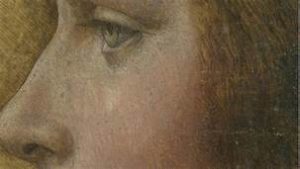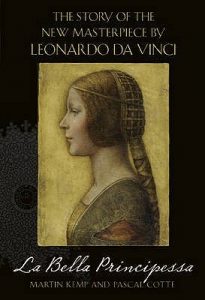Did you ever wonder what Leonardo DaVinci left in his attic when he died? Or maybe in his garage, whoops stable, or in his workshop?
It’s hard to imagine that at least some of the works of the great masters didn’t find their way into the general population of art works of those times.
Where did they go? How did they escape recognition? How can modern art historians authenticate works that emerge with a suspicious hint of the masters about them?
Here’s a great story about the lost and found history of a work by Leonardo Da Vinci.
In 2009 a little portrait known as Young Girl in Profile in Renaissance Dress or Profile of a Young Fiancée, attributed to having originated in the German School, early 19th Century was proven by FORENSIC EVIDENCE to have been painted by Leonardo DaVinci between 1480 and 90. It is now known as La Bella Principessa and is held in a private collection.
HOW THE PAINTING WAS FOUND AND WHY IT WAS EVALUATED
-
A Canadian, Peter Silverman, who was acting on behalf of a Swiss art collector who found the painting in a N.Y.C. gallery, was given the task of verifying the suspicions of the Swiss collector. He felt the painting was older than the 19th He purchased it for $19,000.
-
This led Silverman into the world of forensic authentication of art works. In his words, “I kept saying to myself this is absurd. This can’t be. A DaVinci coming out of the woodwork, just like that, nobody recognized it, fully illustrated, seen by the whole world at Christies. In the hands of one of the top dealers in the world. I was puzzled, sort of stymied.”
First, he thought it was done by an artist copying DaVinci’s style.
-
Paris – A company known as Lumiere Technologies, using multispectral digital technology, looked at the layers of pigment on the vellum backed by oak paneling. The pigments were black, red and white chalk, and black pen and ink.
VIOLA! The imaging showed a partial left hand print and a fingerprint that matched those on other DaVinci works.

The Master, Himself
-
Art expert and historian, Martin Kemp, dated the portrait at 1496 and identified the sitter as Bianca Sforza, daughter of Ludovico Sforza, Duke of Milan and his mistress, Bernardina de Corradis. He gave the new title to the painting.
-
According to Kemp, the original plan for the portrait, because it was on vellum, was to be a book cover for a book of poetry in honor of Bianca.
-
Other evidence includes carbon dating of the vellum shown to be between 1450 and 1650.
-
The hatch marks or painting strokes on the work were made by a left-handed artist. DaVinci was left-handed.

The DaVinci is in the details.
-
Art historians analyzed the dress and hair style of Bianca as belonging to the time period coinciding with DaVinci’s painting period. DaVinci was also known to adhere meticulously to detail and mathematical proportions which are evident in the little portrait, now known as La Bella Principessa.
Material for this blog was provided by an on-line article for CNN by
Hillary Whiteman.

